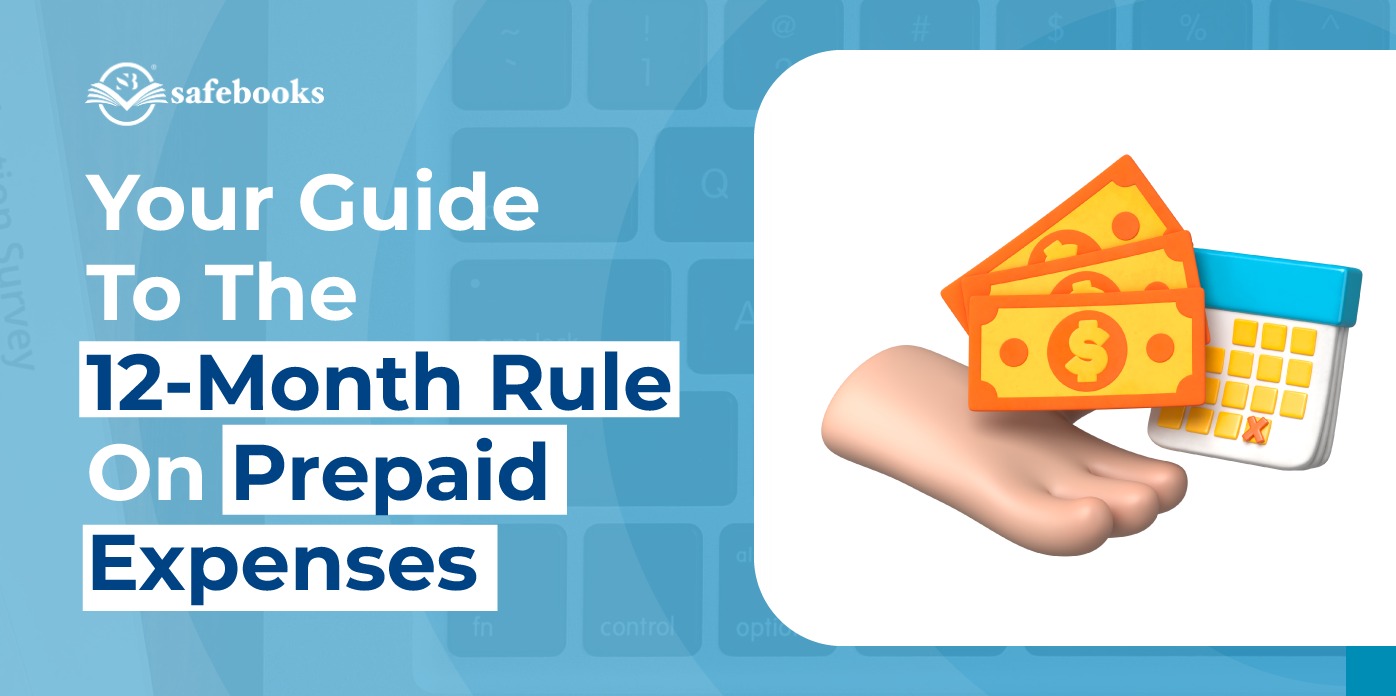Why Businesses Consider Switching
Many U.S. firms stick with accrual accounting because they believe it is mandatory. In reality, most service-based companies under $30 million in revenue can choose the simpler cash basis method. The IRS allows this option for qualified taxpayers, giving small businesses a chance to reduce complexity, improve cash flow visibility, and lower compliance costs (Source: Journal of Accountancy).
Switching is not just about tax reporting. It impacts financial planning, loan applications, and how business owners view profitability. For firms burdened by tracking receivables and payables, the cash basis often provides a clearer picture of money in and out. SafeBooks bookkeeping support helps simplify both approaches depending on business needs.
Accrual vs. Cash Basis Explained
- Cash Basis: Record income when cash is received and record expenses when bills are paid.
- Accrual Basis: Record income when earned and expenses when incurred, regardless of cash movement.
In simple terms, the cash basis mirrors your bank balance, while the accrual basis reflects obligations and promises. Lenders or investors may still prefer accrual statements for comparability, but for tax and day-to-day decision-making, cash basis can feel more intuitive.
SafeBooks assists clients in managing both systems, including hybrid setups, through AR/AP software integration.
IRS Eligibility and Compliance Rules
Not every business can freely switch. The IRS sets rules:
- Gross receipts test: Businesses under $30 million in average annual receipts (3-year test) usually qualify.
- Excluded industries: Certain C corporations, tax shelters, and businesses with inventories face restrictions.
- Aggregation rule: Related entities must be combined for the gross receipts test.
- Form 3115: An Application for Change in Accounting Method must be filed with your tax return to make the switch official.
SafeBooks provides tax support services to ensure eligibility checks, filings, and compliance are handled accurately. For updates on annual rule changes, see our post on IRS updates for the 2025 tax season.
How to Actually Convert Accrual to Cash Books
Filing Form 3115 is only one part of the process. You must also adjust your financials to reflect cash-only transactions (IRS Form 3115 Instructions). Here’s how:
Step 1: Identify the Key Adjustments
When you switch to cash basis, you essentially strip out anything that hasn’t been settled in cash. That means:
- Subtract (remove):
Items without real cash flow are excluded.
- Accounts Receivable (uncollected income)
- Accrued Expenses (expenses recorded but unpaid)
- Accounts Payable (unpaid vendor bills)
- Accounts Receivable (uncollected income)
- Add (reinstate):
Items with actual cash flow are included.
- Unearned Revenue (advance payments not yet earned)
- Prepaid Expenses (cash paid before expense recognition)
- Unearned Revenue (advance payments not yet earned)
This step ensures that only actual cash movements remain in your reporting.
Step 2: Apply Conversion Formulas
Rather than re-posting every transaction, accountants typically use simple formulas to translate accrual figures into cash-basis numbers.
Cash Sales = Beginning AR + Sales Revenue – Ending AR
Cash Sales Calculation
Particular | Amount |
Beginning AR (prior year B/S) | XXX |
Add: Sales (reported on accrual basis P&L) | +XXXX |
Less: Ending AR (current year B/S) | -XXXX |
Cash Sales | xxx |
Cash Sales Using T Ledger
Particulars | DR Amount | Particulars | Cr Amount |
Beginning AR | xxxx | Cash Received | This box will be formulated (total of DR less Ending AR) |
Sales (as per accrual P&L) | xxxx | Ending AR | xxx |
Total | xxxx | Total | xxxxx |
Cash Payments for Expenses = Ending Prepaid Expenses + Income Statement Expenses + Beginning Accrued Expenses – Beginning Prepaid Expenses – Ending Accrued Expenses
Cash Payments for Purchases (Inventory) = Ending Inventory + COGS + Beginning AP – Beginning Inventory – Ending AP
These formulas remove the impact of timing differences so your books show only the inflows and outflows of cash.
Step 3: Work Through an Example
Let’s say your accrual books look like this:
- Accrual Sales = $200,000
- Beginning AR = $30,000; Ending AR = $20,000
- Unearned Revenue increase = $7,000
Cash Revenue = 200,000 + (30,000 – 20,000) + 7,000 = $217,000
On the expense side:
- Accrual Expenses = $120,000
- AP decreases by $5,000
- Prepaids decrease by $2,000
Cash Expenses = 120,000 + 5,000 – 2,000 = $123,000
So, Cash Basis Net Income = $217,000 – $123,000 = $94,000.
This shows how adjustments can shift the picture of profitability once you take cash timing into account.
Step 4: Record Adjusting Journal Entries
Finally, you reflect those adjustments through journal entries. Common entries include:
Description | Debit | Credit |
Reverse AR not collected | Sales Revenue | Accounts Receivable |
Recognize unearned revenue received | Unearned Revenue | Sales Revenue |
Reverse unpaid expenses | Accrued Expenses | Expense Account |
Remove unpaid AP | Expense Account | Accounts Payable |
Reclassify prepaid expenses consumed | Prepaid Expense | Expense Account |
These entries clear out non-cash items so that the income statement and balance sheet align with cash movements only. SafeBooks supports companies with these adjustments through specialized bookkeeping services.
Quick Checklist for Conversion
Before making the switch, keep this checklist in mind:
- Confirm IRS eligibility (revenue test, industry rules, related parties).
- Prepare adjustments (AR, AP, prepaid, accrued expenses, Section 481(a)).
- File Form 3115 with your tax return.
- Update your accounting systems (QuickBooks, Xero, etc.).
- Inform banks, investors, and auditors if they need accrual reports.
Common Mistakes to Avoid
Firms often run into avoidable errors during conversion:
- Forgetting to aggregate related entities → IRS rejection.
- Incorrect Section 481(a) adjustment → audit risk.
- Missing schedules on Form 3115 → delays.
- Failing to update accounting software → reporting mismatches.
Our team often advises clients to prepare parallel books for one cycle before filing to avoid these issues.
Expert Insight
“Switching from accrual to cash basis can be one of the simplest tax planning strategies for small businesses, but it requires careful execution. We advise clients to prepare parallel books for one cycle before filing the official change. This prevents surprises and ensures clean IRS documentation.”
– Anshul Agrawal
Accounts Director (CA), SafeBooks Global
What You Should Remember
Here are the key points to keep top of mind:
- Most U.S. service-based firms under $30M qualify.
- Conversion requires both IRS compliance (Form 3115, Section 481(a)) and book adjustments (removing AR/AP, prepaid, accrued balances).
- Done right, it can reduce taxes, simplify reporting, and provide cleaner visibility into real cash flow.
- Partnering with experts ensures your systems and tax filings remain compliant.
Ready to Make the Switch?
If your business is still operating on accrual when cash basis is a better fit, you could be missing opportunities to manage taxable income more effectively. A carefully planned conversion can reduce administrative stress, create clearer visibility into real cash flow, and strengthen compliance with IRS rules. The risks, however, are real mistakes in the process that may lead to audit scrutiny or unexpected tax bills.
To explore whether your business qualifies, and to design a transition plan that is both tax-compliant and seamless for your systems, Contact SafeBooks Global. Our team supports U.S. firms of all sizes in navigating IRS requirements, preparing documentation, and managing clean software transitions, so you can focus on growth with confidence.
FAQS
Can every small business switch?
No. Some industries (C corps, inventory-heavy businesses, tax shelters) are restricted.
Do I need IRS approval?
What happens to receivables and payables?
Will lenders still want accrual books?
Can SafeBooks handle both systems?
-

Director (CA)
Anshul is a detail-driven Chartered Accountant who works closely with CPA firms and small businesses to deliver high-impact accounting solutions. With a decade of hands-on experience in U.S. taxation, audits, and workflow optimization, he ensures every client receives consistent, quality-driven support from SafeBooks’ global team.



